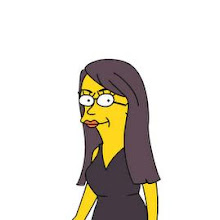 On Saturday I attended the open house at the Lawrence Berkeley National Lab in Berkeley, CA. LBNL is one of 16 national labs operated by the Department of Energy. It is a part of the University of California.
On Saturday I attended the open house at the Lawrence Berkeley National Lab in Berkeley, CA. LBNL is one of 16 national labs operated by the Department of Energy. It is a part of the University of California.It was original referred to as the Radiation Lab at the University of California. It was part of the Manhattan Project that developed the atomic bomb during World War II.
I first became familiar with LBNL when I read the book "The Cuckoo's Egg" by Clifford Stoll. He was managing some computers at LBNL and was asked by his supervisor to figure out why there was a $0.75 accounting error in the usage records. This led Stoll to discover that a hacker has accessed the system.
LBNL performs unclassified research primarily in the field of physics, though it has diversified into almost every area of scientific research.
LBNL has a very distinguished history. Eleven of its research have won Nobel Prizes, starting with Ernest Lawrence, and most recently George F. Smoot. Smoot is one of my favorite scientists. He not only won the Nobel Prize for the COsmic Background Explorer, is also the cousin of Oliver Smoot who is famous as the "Smoot" who was laid end to end to measure the Harvard Bridge by students at MIT. The Smoot Marks are still visible, being traditionally restored each year. Appropriately, Oliver Smoot went on to be the chairman of the American National Standards Institute(ANSI) and the president of International Organization for Standardization(ISO). George Smoot has also made a cameo appearance as himself on "The Big Bang Theory" where he asked Dr. Sheldon Cooper if he was on crack, and was the second person to win a million dollars on "Are You Smarter than a 5th Grader."
In order to get to LBNL we had to go to the University of California campus where we boarded a shuttle bus that took us up through the Berkeley Hills to the lab.
When I arrived at the lab the first impression I had was "Eureka." That is, I felt like I was visiting the fictional town of Eureka from the SyFy television show. The whole event seemed sort of like "Fonder's Day" from the first episode of the current season of the show.
I wondered around, checking out the various booths highlighting aspects of research conducted at the lab. I then took a bus tour of the campus, which included a trip by the Bevatron building, which is, sadly, being torn down. The Bevatron was the first particle accelerator to achieve billion electron volt(BeV) levels. The Bevatron was where antiprotons were first observed, which confirmed the existence of antimatter. It also allowed the discovery of many other particles leading to a new era in physics. While it will soon be gone, its legacy will live on at locations like the Large Hadron Collider in Bern, Switzerland.
The real highlight of the open house was visiting the Advanced Light Source(ALS). Housed in a building original designed for a cyclotron, it is a synchrotron providing over 40 beamlines. Both ultraviolet and soft x-ray beams are available for scientific research. It is one of the brightest light sources of ultraviolet light and soft x-rays, which allows research that had previously been impossible.
The ALS facility defies easy description. During the tour we walked around the outer area surrounding the facility. This allows access to the various experimental stations which can be used by approved researchers. Each station has a specific purpose.
Overall, the ALS is a maze of wires, pipes, computers, instruments, etc. Much of the pipes are covered in a specialized form of aluminum foil that helps protect the vacuum that the beams travel through.
Another facility at LBNL,houses a pair of scanning tunneling microscopes, that are capable of a level of resolution to half the width of a hydrogen atom. Unfortunately, that building was not open during the recent event.
One other highlight of the visit was seeing Ernest Lawrence's desk. Among the items preserved there are a cigar box that was used to house the first plutonium ever produced, some of Lawrence's lab notes, and the first radiation warning sign. The now familiar symbol was first created at LBNL. The original version was magenta on a blue background. Today, the official version is black on a yellow background. The design was based on a pattern observed in a cloud chamber.
Visiting Lawrence Berkeley was the fulfillment of something I had desired since first reading "The Cuckoo's Egg." It was also a chance to get an up close view at some of the cutting edge research going on while making a connection to scientific history.


No comments:
Post a Comment